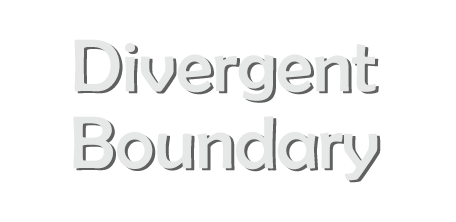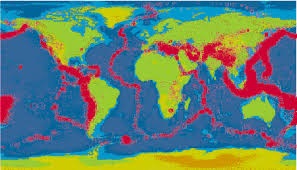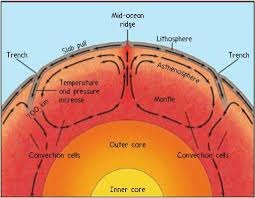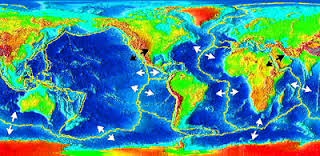
There are small and large tectonic plates that cover the earth. These plates are either oceanic or continental. They exhibit movements of divergence and convergence. Divergent boundaries are places where the tectonic plates pull away from each other. A new lithosphere is created as the old slips away and spreads to the either side. When two oceanic plates diverge, magma from the mantle wells up in space and a new lithosphere is formed. On the other hand, when two continental plates diverge, a rift–like valley is created at places where the plates are pulling apart. Divergent plate’s boundaries are characterized by volcanic eruptions, low intensity earthquakes, a high ridge and a young lithosphere. Eventually, the widening crust may become thin enough to break away and form a new tectonic plate and water may rush in to form a new sea or an ocean basin.
At mid–ocean ridges, evidence forcing the acceptance of the seafloor–spreading hypothesis was evolved and the divergent boundaries contributed to it. Aerial geomagnetic pictures showed a strange pattern of symmetrical magnetic reversals on opposite sides of the ridge centres. It was observed that the drifting patterns were regular and not coincidental as the width of the opposing bands matched. A link was established by scientists Lawrence W Morley, Frederick John Vine and Drummond Hoyle Matthews in the Morley–Vine–Matthews hypothesis while studying the polar reversals. The ages of the rocks in each band confirmed the theory that magnetic banding directly corresponds with Earth’s polar reversals. The time and space of the polar reversals and spreading rate are furnished by the bands.

As the earth is in a spherical shape, the Divergent plates are three–dimensional. The lithosphere plates are curved and fractured into various sections. The divergent movements of lithosphere plates can be best described as the movement ‘apart’ of the peeled sections over a curved surface. Forces of surface tension dominate the interactions between the plates at the divergent boundaries.

The earth’s crust is broken into large pieces or plates termed as tectonic plates which can be oceanic or continental or a combination of both. The boundary where two separate plates meet is called a fault. A fault is a crack in the earth’s crust due to movement of two plates. A divergent boundary is a fault where two plates are moving away from each other. In an oceanic plate, magma rises through the fault and creates ridges in the ocean bed as well as on the continent and results in a rift valley.

Divergent boundary faults are classified in the oceanic lithosphere by rifts of the oceanic ridge system such as the mid–ocean ridge and in the continental lithosphere by creation of rift valleys. A classic example of this type of plate boundary is the Mid–Atlantic Ridge which is a high area in comparison to the surrounding seafloor as there is a lift from the convection current below.

The Mid–Atlantic ridge is an example of divergent boundary of oceanic plate. The East Africa Rift Valley is another prime example of a continental divergent plate boundary. The valley has not completely rifted but is above sea level and is occupied by lakes at several locations. The Red Sea is a completely developed rift where the plates are entirely separated and the central rift valley has dropped to the sea level.
G Kowledge of | 0 Comments >>
0 Comments
Leave Comment
Your email address will not be published. Required fields are marked.